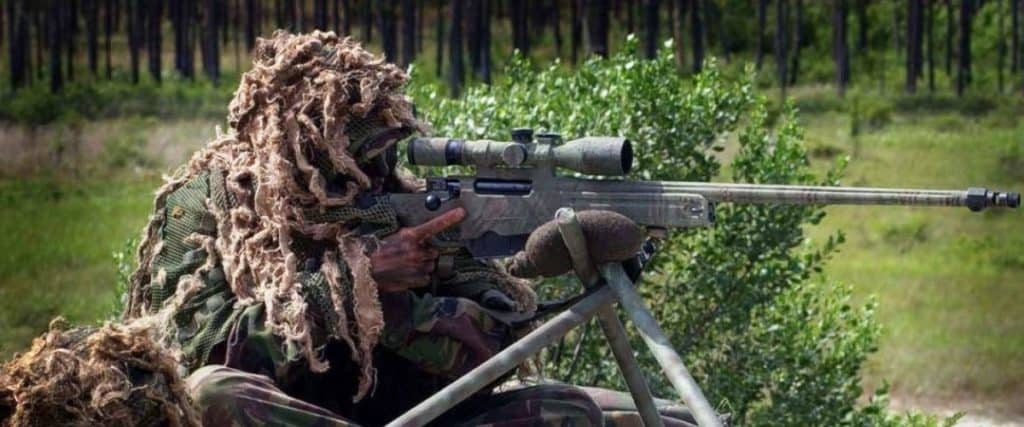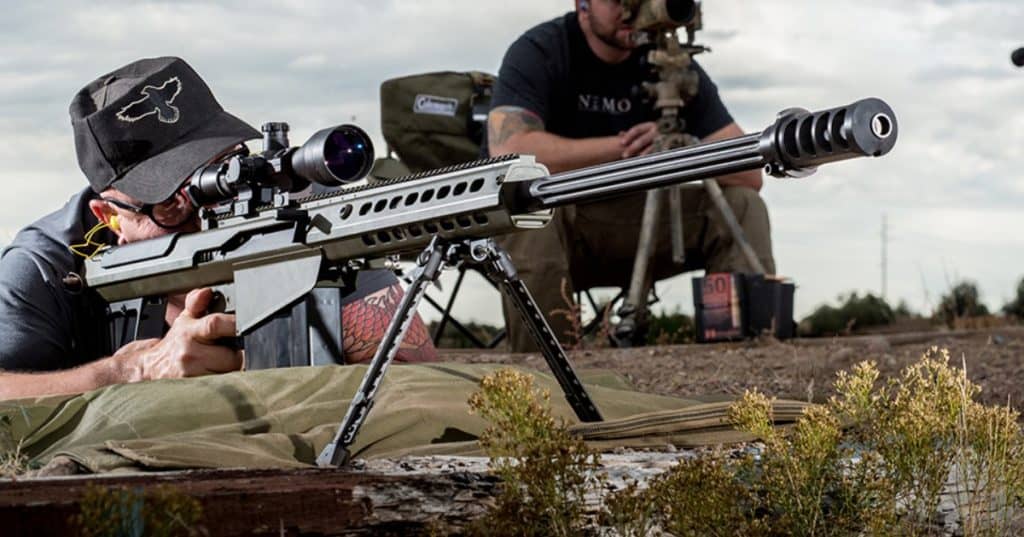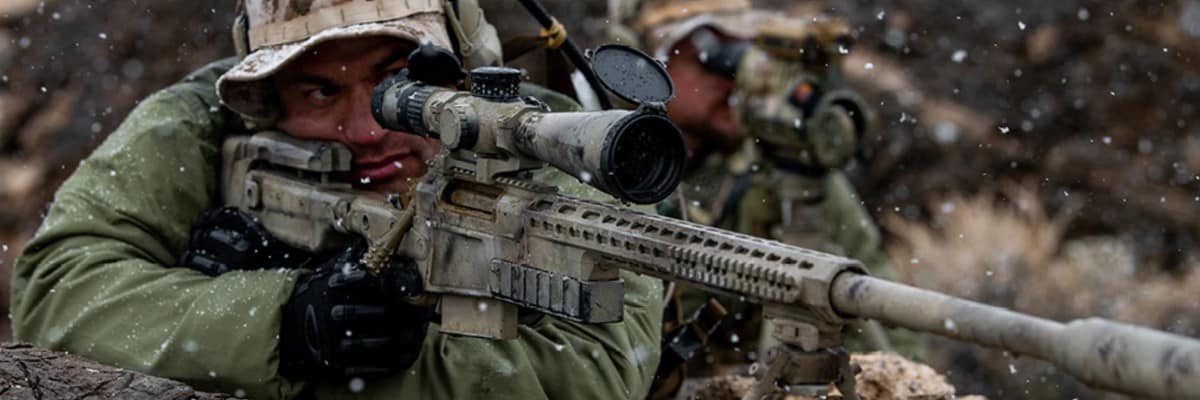Distance has always been a determining factor when rating snipers. In 2017, a Canadian Special Forces sharpshooter shattered the world record for the longest confirmed kill shot when the Canadian Special Operations Command reported that a team member took down an ISIS fighter in Iraq from over 3,500m away. Breaking such a record is a lofty feat that requires a world of factors to get right.
It needs to be emphasized just how challenging it is to establish a good kill at such a great distance. Long-range shooting calls for numerous intervening variables, including but not limited to gravitation, atmospheric pressure, wind speed and direction, altitude, etc. The influence of these determinants can often become significantly more evident at larger distances. Honing your skills to an expert level requires time and practice, but it’s satisfying when you accomplish that next step in your shooting skill set. This article shall be looking at sure-fire tips to help you shoot like a long-range sniper. Read on.
What Is Long-Range Shooting
Long-range shooting is a common expression for a host of shooting specialties where the distance to the target is long enough to require the sniper to compute multiple ballistic factors, particularly about the intervening influence of wind and gravity. Hitting targets at point-blank ranges is pretty much straightforward as it requires just a few adjustments, and you are good to go. This is not so with long-distance shooting. In addition to skill, concentration, proper firearm, one needs to get the best of long-range rifle scopes to hit targets hundreds of yards out. A seasoned sniper will typically shoot at targets between 600 and 1,200 meters out and occasionally eliminate enemy personnel from much farther away.
Snipers are specialists at blending into the environment, highly patient individuals, physically developed, and consistently well-trained. They carry out their lethal and trademark missions with suitable rifles and sniper scopes, capable of helping them eliminate threats at longer-than-normal distances. Snipers are unquestionably the most lethal shooters on the battleground, with the ability to hit their marks from hundreds and hundreds of yards away. All these occur with their marks unaware of their presence.

Long-Range Shooting Tips
At this point, you’d agree that long-distance shooting is no joke. Long-range shooting basics to shoot long-range shots are the same as those used by legendary snipers such as Carlos Hathcock, Simo Hayha, and Vasily Zaitsev. It doesn’t matter if you are shooting for hunting practice, competition, or simply honing your shooting skills. With these proven long-range shooting tips, you are on your way to being an expert long-range shooter. Remember, using a spotting scope during long-range shooting can add considerable depth to your shooting ability.
Choose the Right Weapon
Regardless of how lethal and good a sharpshooter could be, they cannot have a good kill without the right weapon. While you may not require the best rifle to shoot at long-range, but you do need a sturdy one with features built-in for consistency. It has to sport a good barrel capable of shooting the right caliber rounds hundreds of yards away. Precision rifles are optimized for shooting at long-range targets and considerably heavier to help reduce recoil effects. They come with features that allow the shooter to accomplish their goals. They are also likely to come in a chassis, pretty much like an AR. Usually, these rifles are available in longer-range calibers flaunting rails for easy installation of cutting-edge optics.
Get a Long-Range Scope
Every long-range shooter needs a competent rifle, match ammo, and a suitable long-range riflescope for their long-distance shooting goals. There is no way you are sighting and hitting targets 300 yards out with your naked eyes. Suppose you are using a centerfire rifle cartridge like the 6.5mm Creedmoor. In that case, you should be looking for the best long-range scope for a 6.5 Creedmoor. A decent long-distance scope comes with quick-adjust turrets that enable the shooter to quickly and efficiently dial in the proper elevation and windage for their range and ballistics, placing the crosshairs precisely towards the target and eradicating the need to hold over.
Know the Effect of Wind and Gravity on Bullets
Army snipers are great at knowing the effect of the intervening wind and gravity on the bullet before squeezing the trigger. While gravity and wind do not have considerable effects on point-blank or close-range shooting, it is never the same for long-distance shooting. The sniper has to consider these external factors when aiming meticulously. Gravity is responsible for making the bullet drop to the ground as it travels; thus, depending on how far the target is, you must judge how much effect gravity will have on the bullet before taking the shot. Sniper bullets are usually heavy, but not enough to stop the wind from blowing it off the target. Consequently, you may want to shoot left or right of the target depending on the wind’s direction.
Position Yourself Properly
Your body Position (The Prone Position) is the trademark position for snipers. It is imperative that your position is firm to ensure your rifle remains unmoved when shooting at objects far away. Long distance shooting is usually carried out in a prone position. Consequently, the body must be well-grounded, with your elbows and the supporting forearm on the floor. Once you are in position, you’d want to be relaxed to take advantage of your delicacy and skill. Stay relaxed and comfortable pointing to the target.
Range It Right
When a sniper is in position, the next thing to do is determine the distance to the target. The laser rangefinder is the ultimate ranging tool for a sniper. It is decisive and decent enough to offer accurate readings from a far distance. If the laser rangefinder doesn’t get the job done, a sniper may refer to compass and maps as some targets may be tricky to get accurate readings because they don’t reflect laser light properly.
Perfect Your View
The sniper’s excellent hiding position allows for good sight and unobstructed views while simultaneously covering the sniper and rendering protection from possible incoming gunfire. Regardless of the ground’s topography, you must ensure that the horizontal reticle aligns appropriately with the imaginary horizon. This keeps the bullet balanced during flight and is not impacted right or left depending on how the rifle is canted.
Practice
Practice, they say, makes perfect. Becoming an elite sniper is unattainable without voluminous practice. At first, it may seem like a challenging task to hit targets at great distances, but, with proper tools, judgment, and training, shooting long-range targets with certainty like Carlos Hathcock is no mystery. Understanding long-distance shooting variables such as wind, gravity, air pressure, temperature, humidity, and drag and ballistic coefficient (BC) is key to becoming a proficient shooter. All these and more are what you learn when you designate ample time for practice.

Long-Range Shooting – Some Common Mistakes
In the event that shooting small groups becomes a tough thing to do, there may be certain things you are not doing right. Here are some common mistakes (but not limited to) to avoid when shooting at considerable distances.
Unstable Rest
When looking to establish consistent groups, a stable rest is a right way to go. The rest should remain stable after every shot to ensure good group shots. An unshakable rest saves both time and ammo; ensure you set up one at all times.
Parallax Error
When the scope’s reticle and objective are not on the equal focal plane, this is when you have parallax issues. This error is very much telling when shooting long-range than when it does in taking point-blank shots. Check around to ensure the reticle is stable. As you change ranges or a shot position, you need to check again to eliminate parallax errors.
Improperly Mounted Scope
If you are an absolute beginner, mounting a scope on your rifle could turn out a daunting task and, above all, frustrating. It is, however, a step you must get right for the much-need results. It is recommended you start with high-grade rings and bases. You’d want to place your rifle in a vise and level the scope before the installation—a torque wrench to fasten the screws according to the scope’s specs.
Poor Weather Conditions
Weather plays a huge factor when taking long-range shots. Variations such as wind, high temperature, and to a small extent, humidity can adversely affect your readings, thus leading to missed shots.
Final Words
There you go—tested tips to help you shoot like a long-range sniper. While the tips above are not all you need to be the next longest confirmed kill record-breaker, they sure can take you from a beginner to a proficient long-range shooter. If you are learning to shoot long-range, get the right weapon, a good riflescope (not necessarily the most expensive), and other gadgets. You’d want to practice hard to hone your sniper shooting technique from beginner to expert level.
Mike Fellon is an experienced firearms enthusiast and optics expert. He delivers unbiased and detailed rifle scope reviews. Born and raised in Dallas, Texas. He inherited his hunting passions after his father John – he was fascinated by his stories, hearing how much attention, focus, dedication and patience he invested in shooting every animal. When he was old enough, his father first allowed him to shoot some cans and bottles with his shotgun, and then took him hunting – it was love at first sight. Mike has never stopped shooting ever since.

